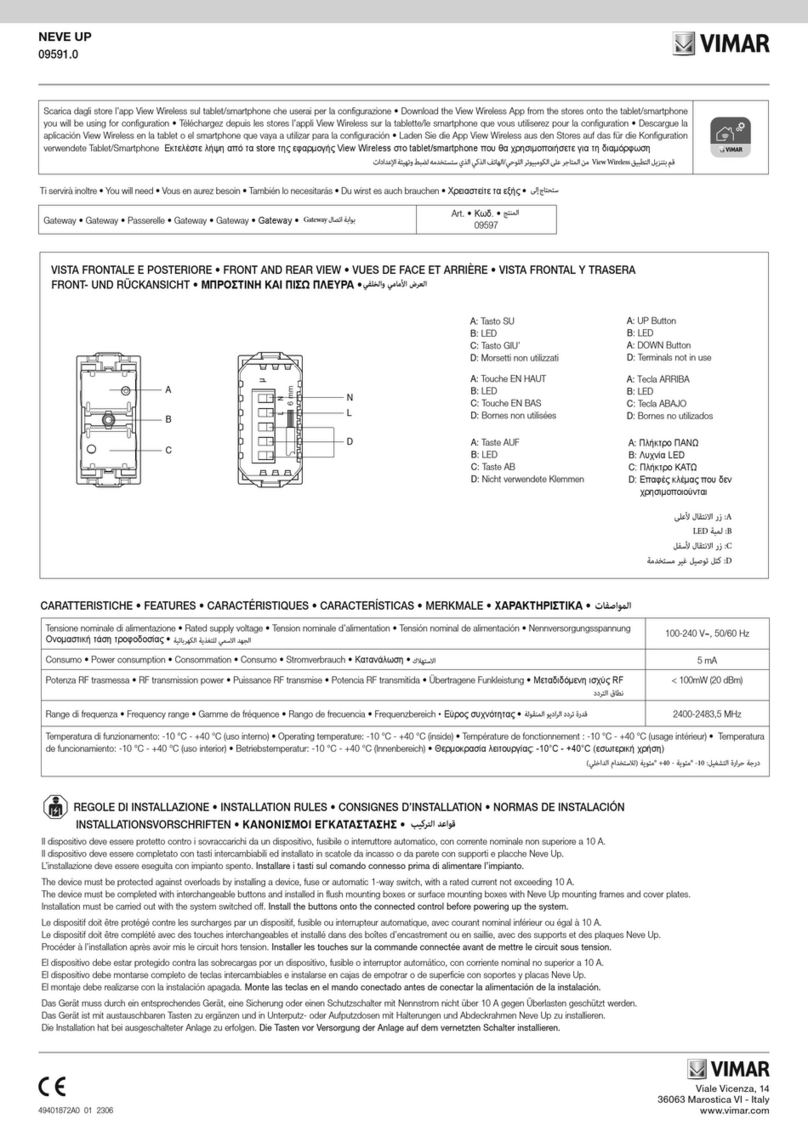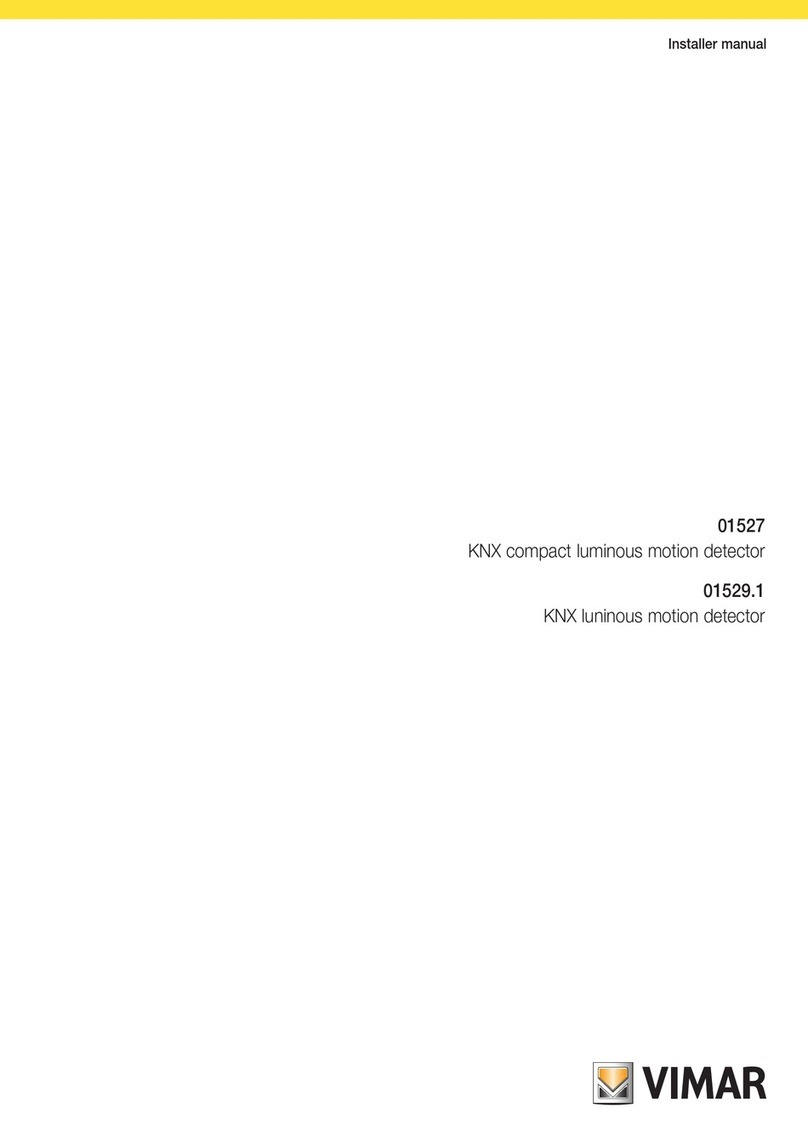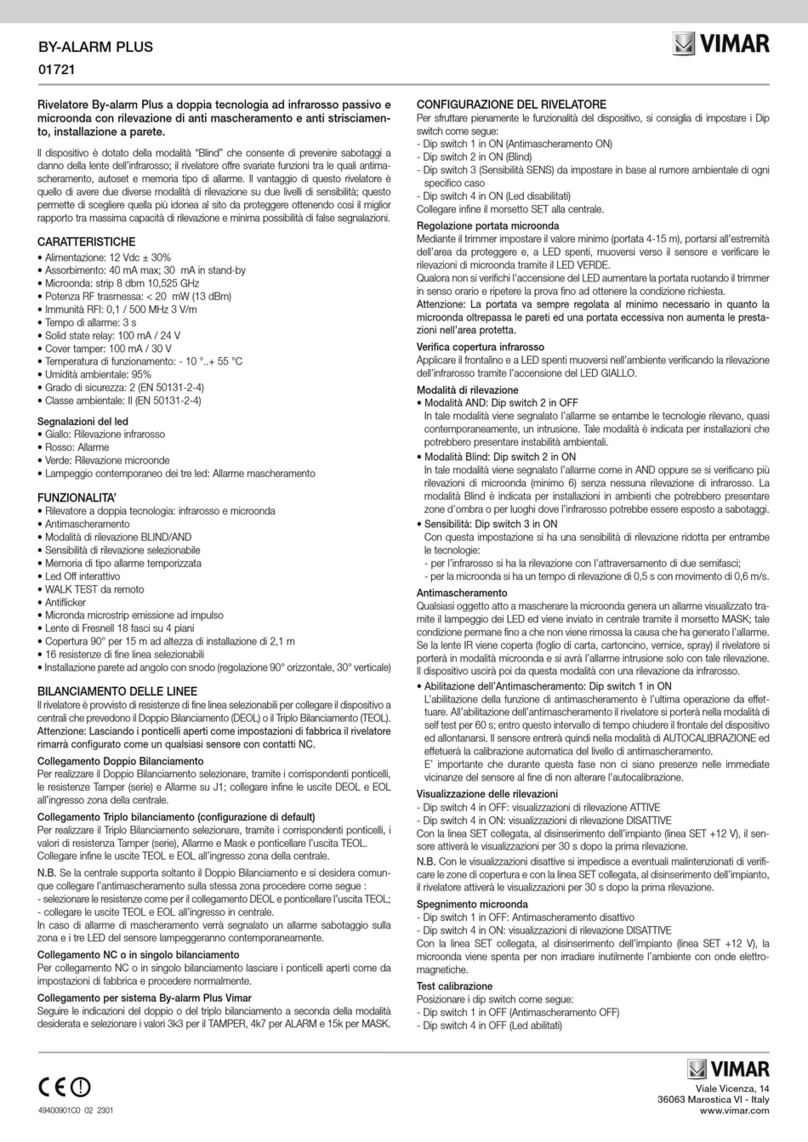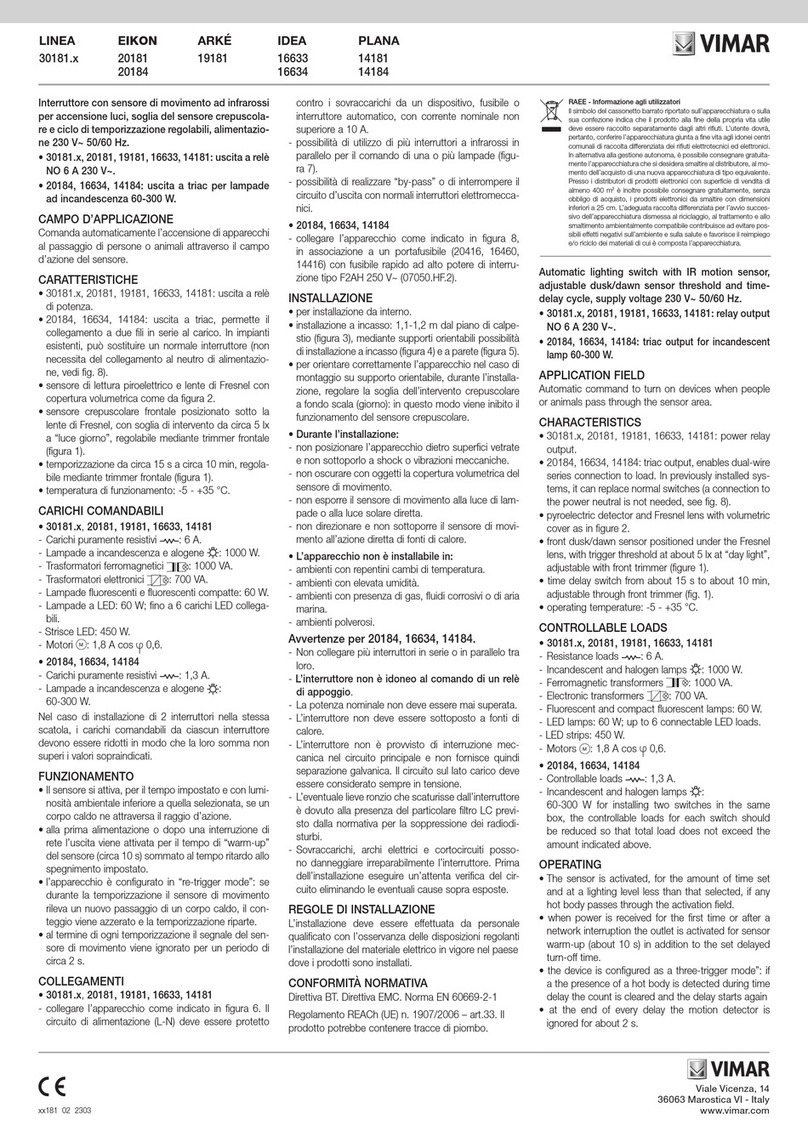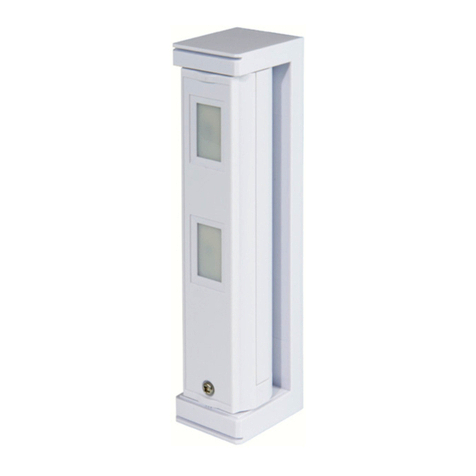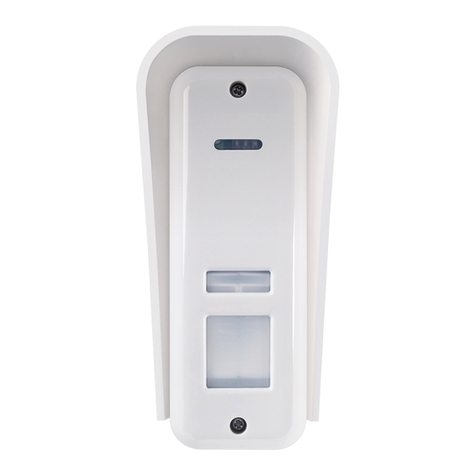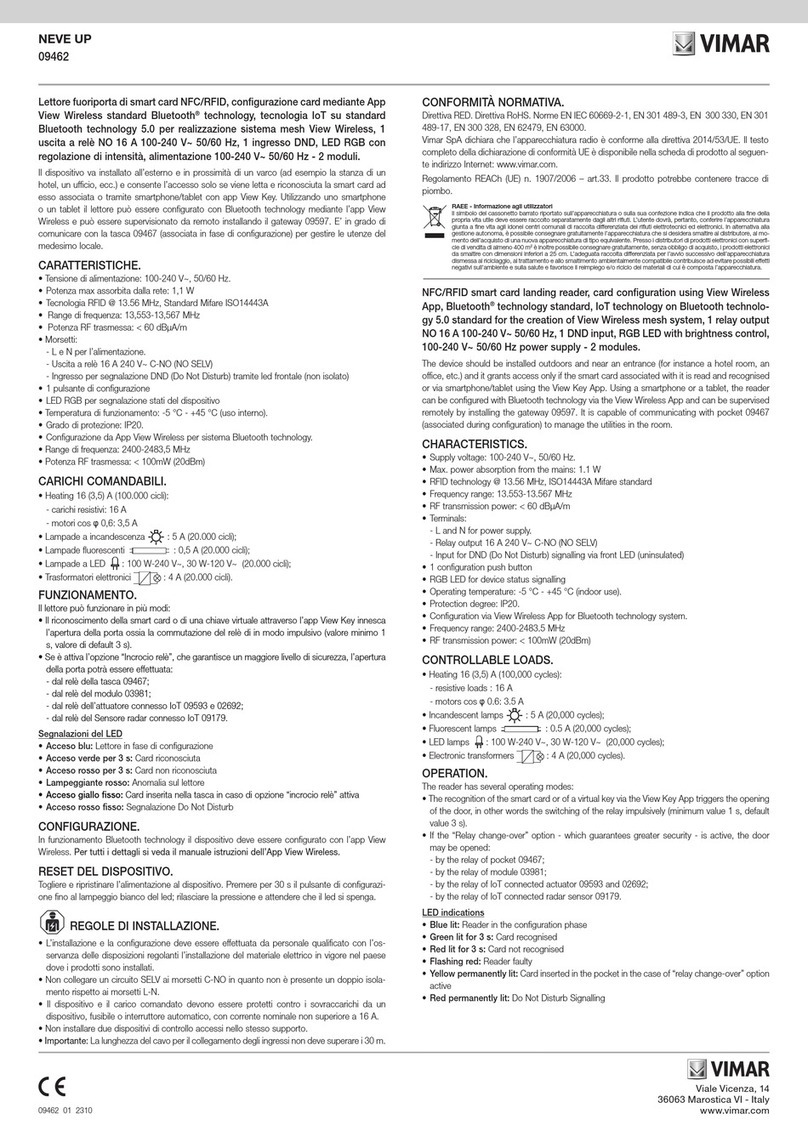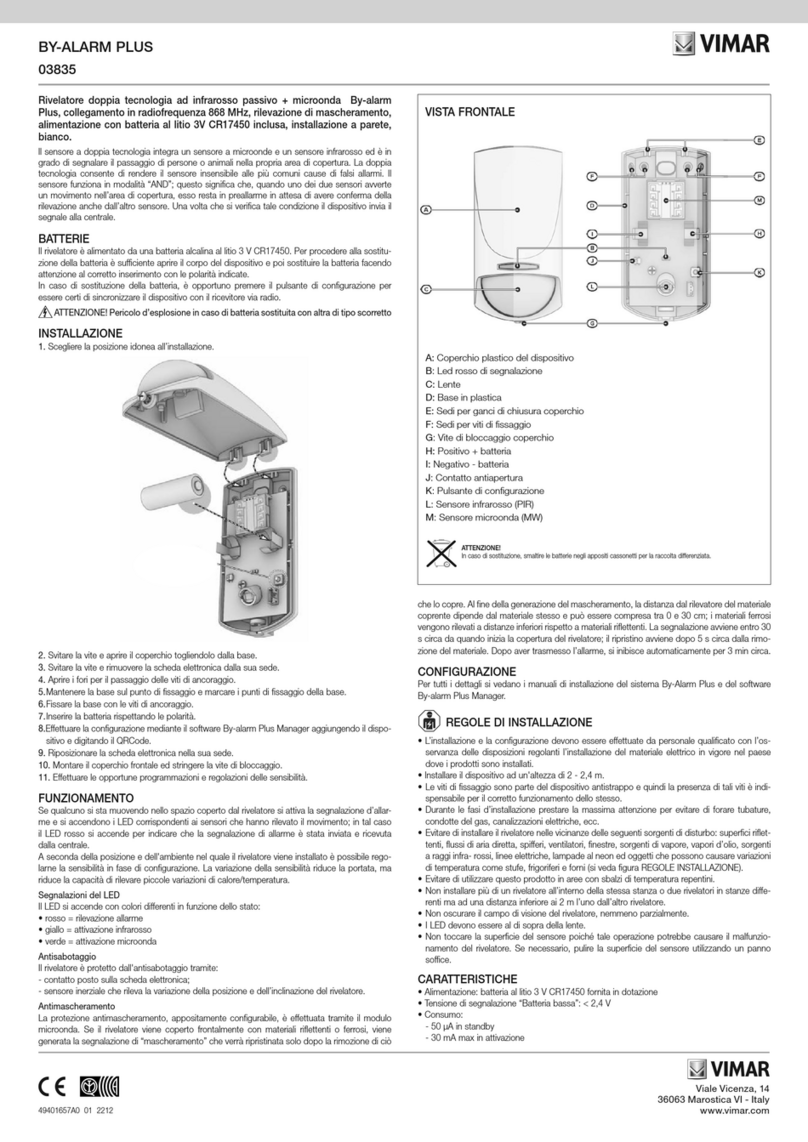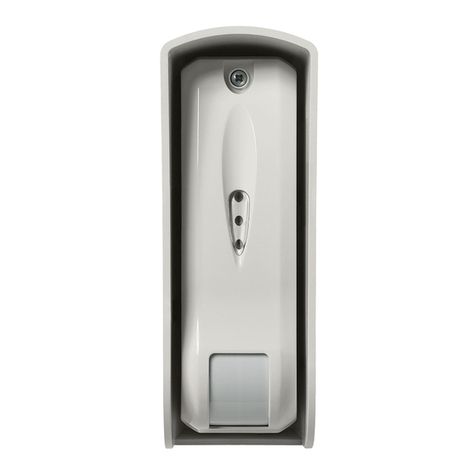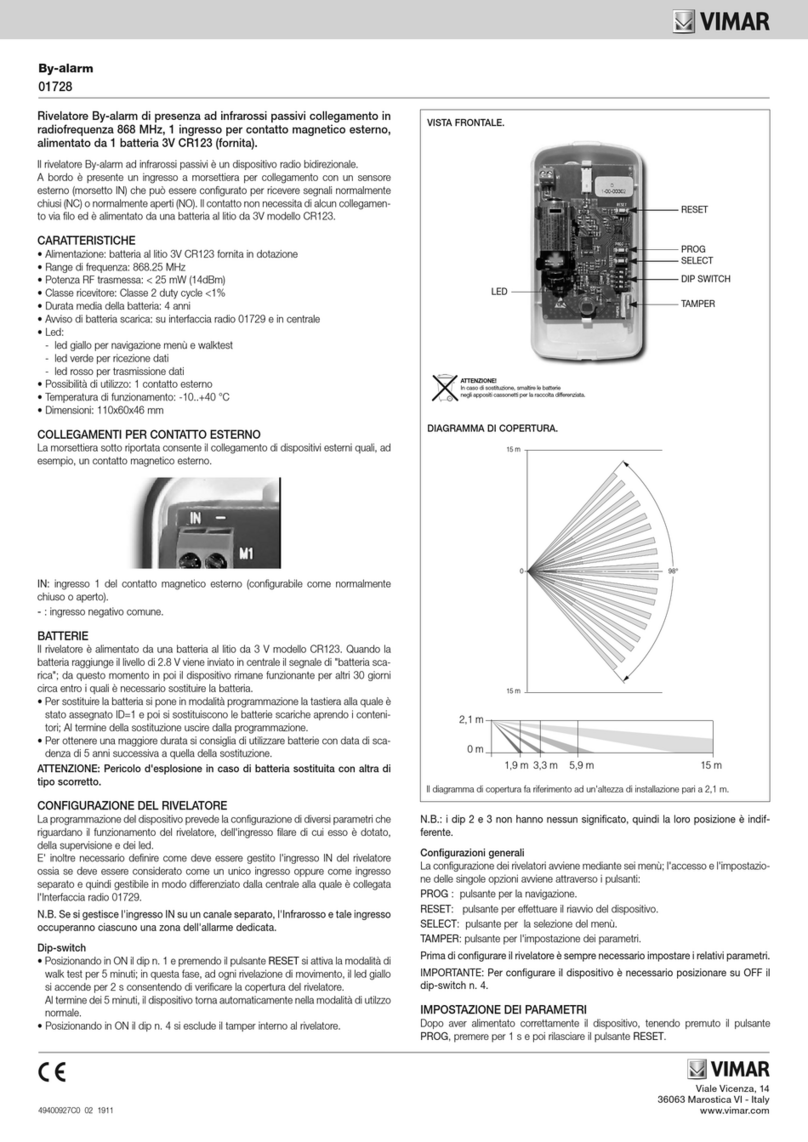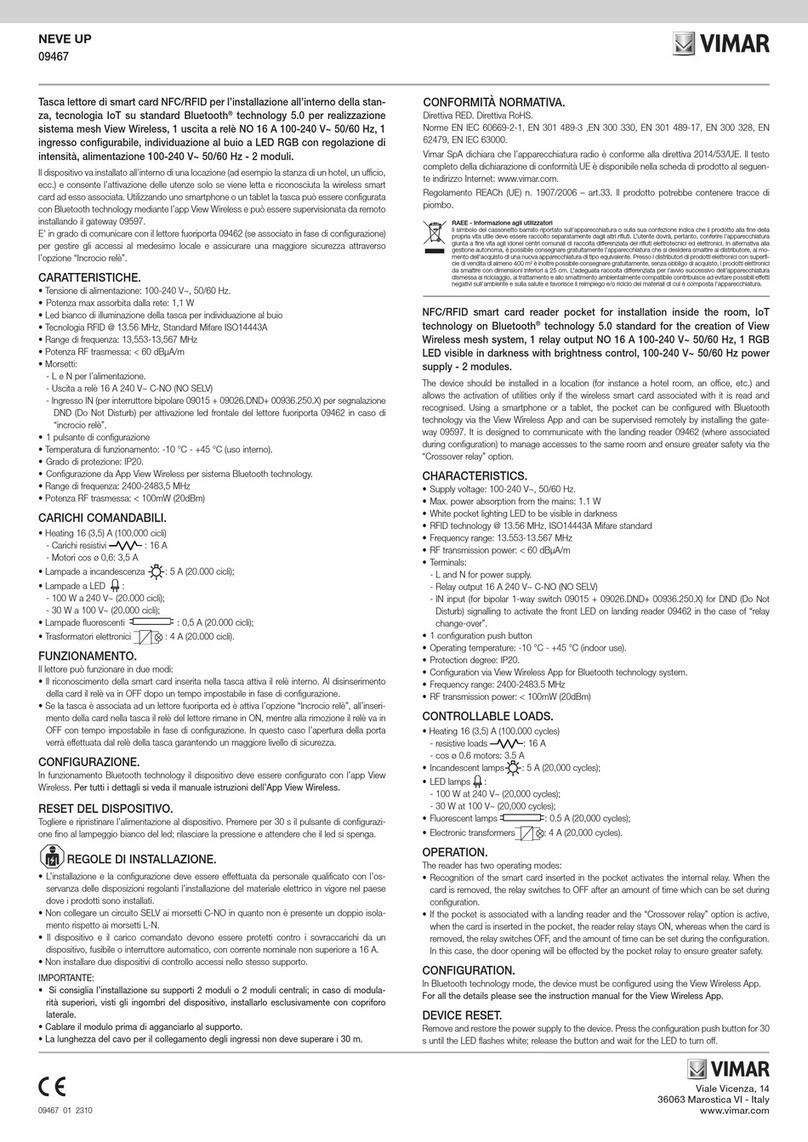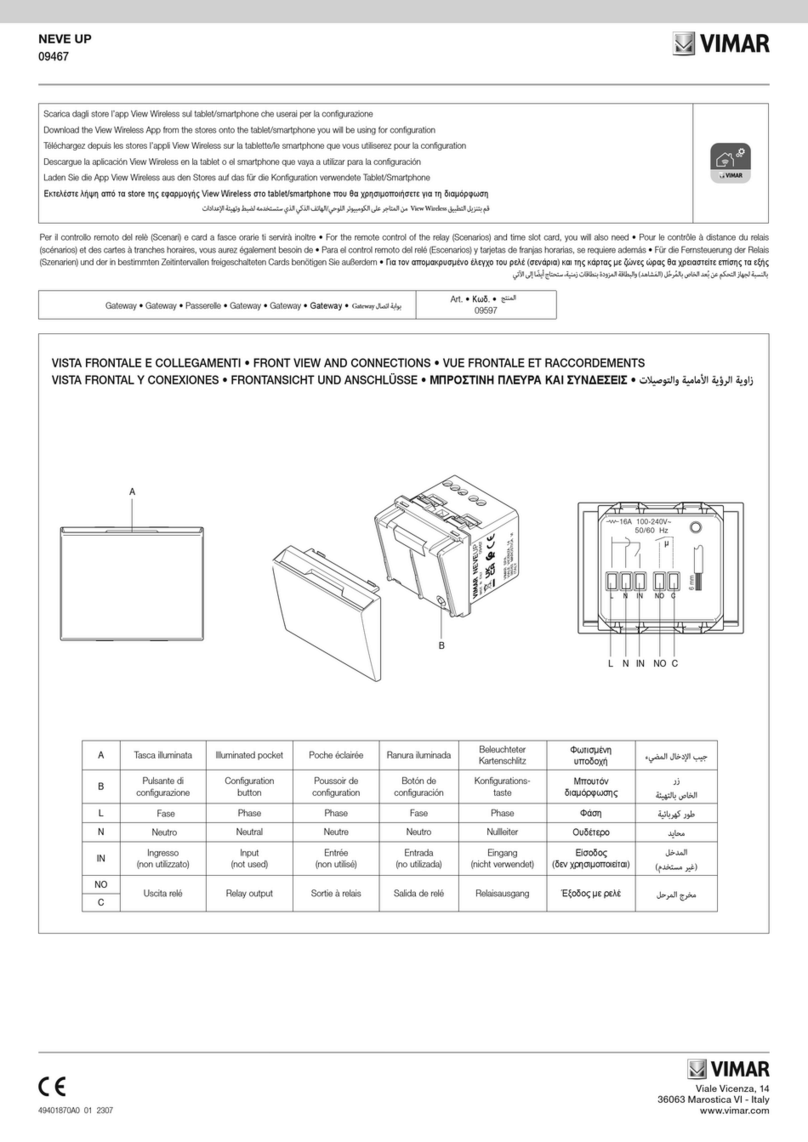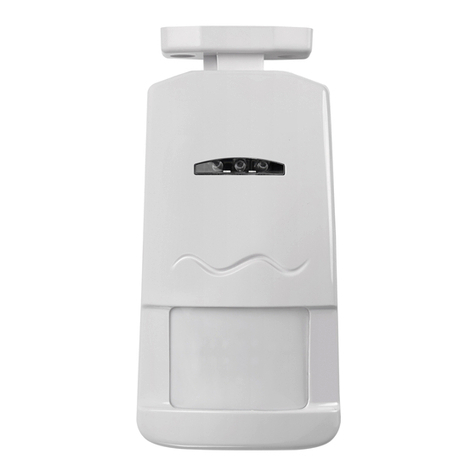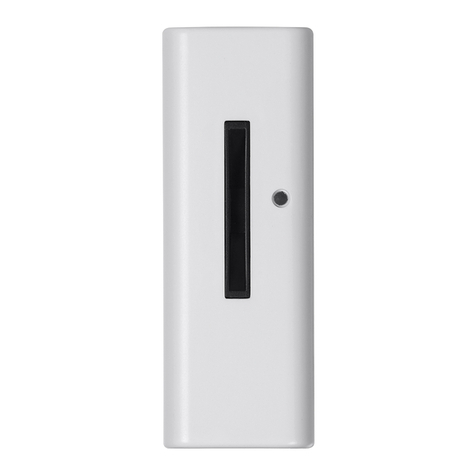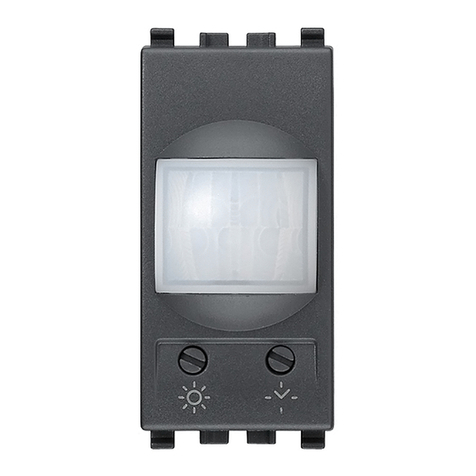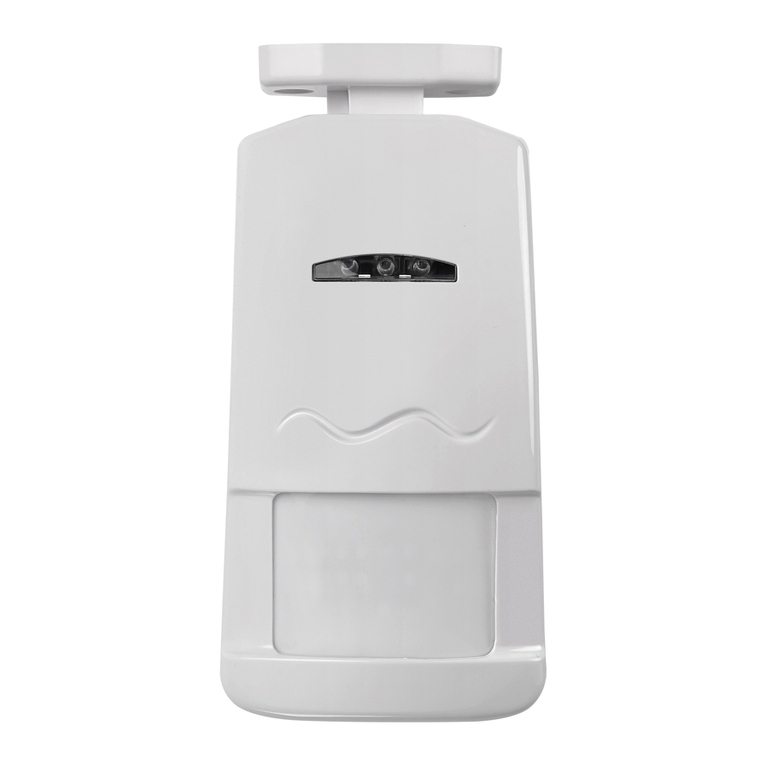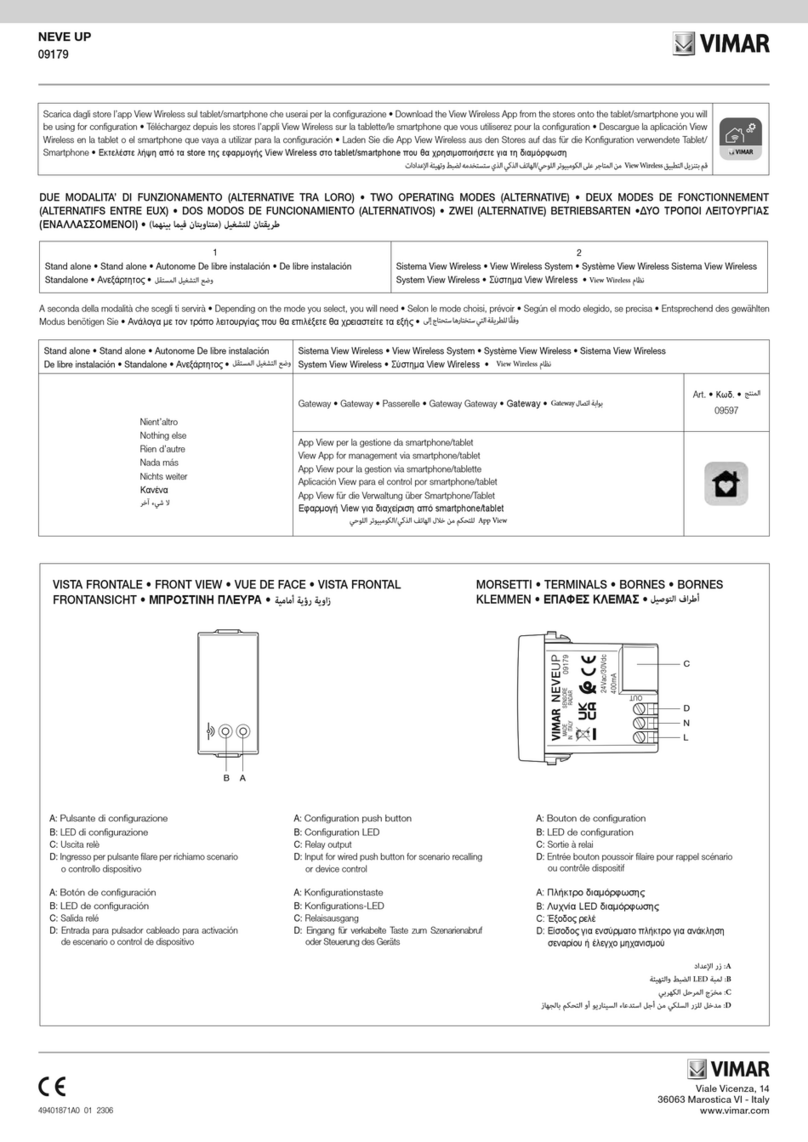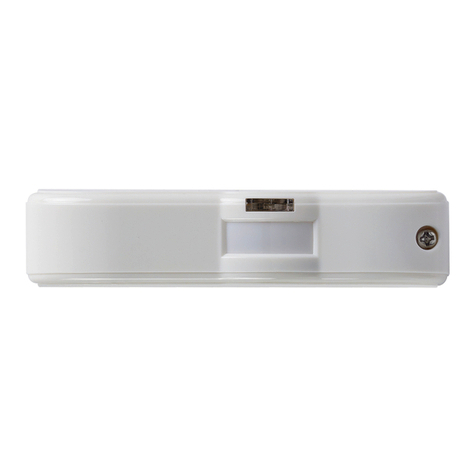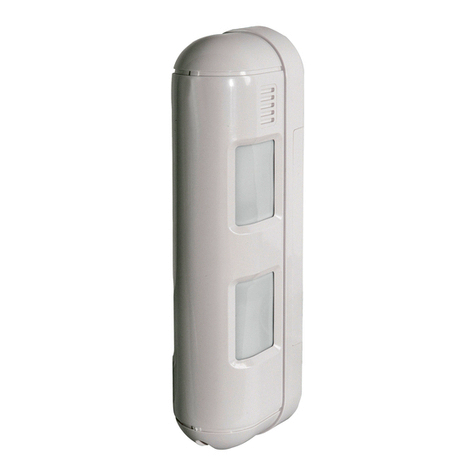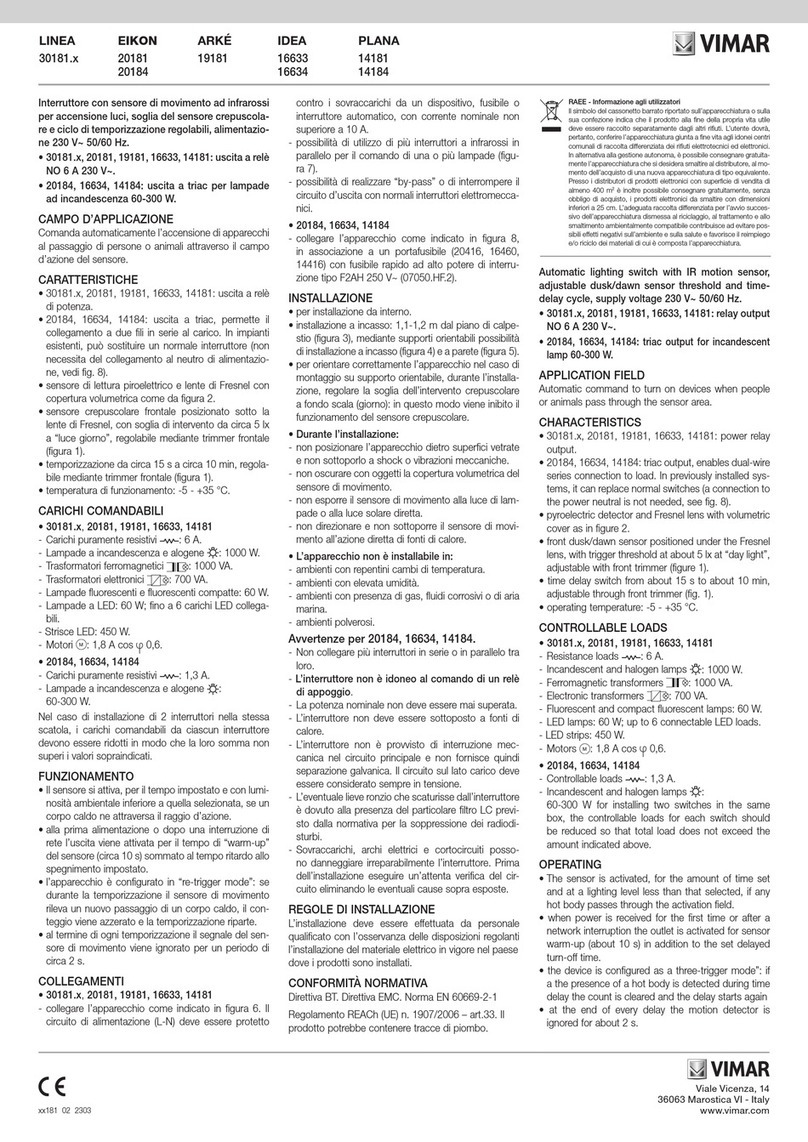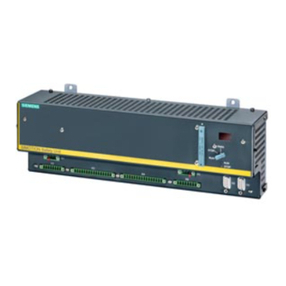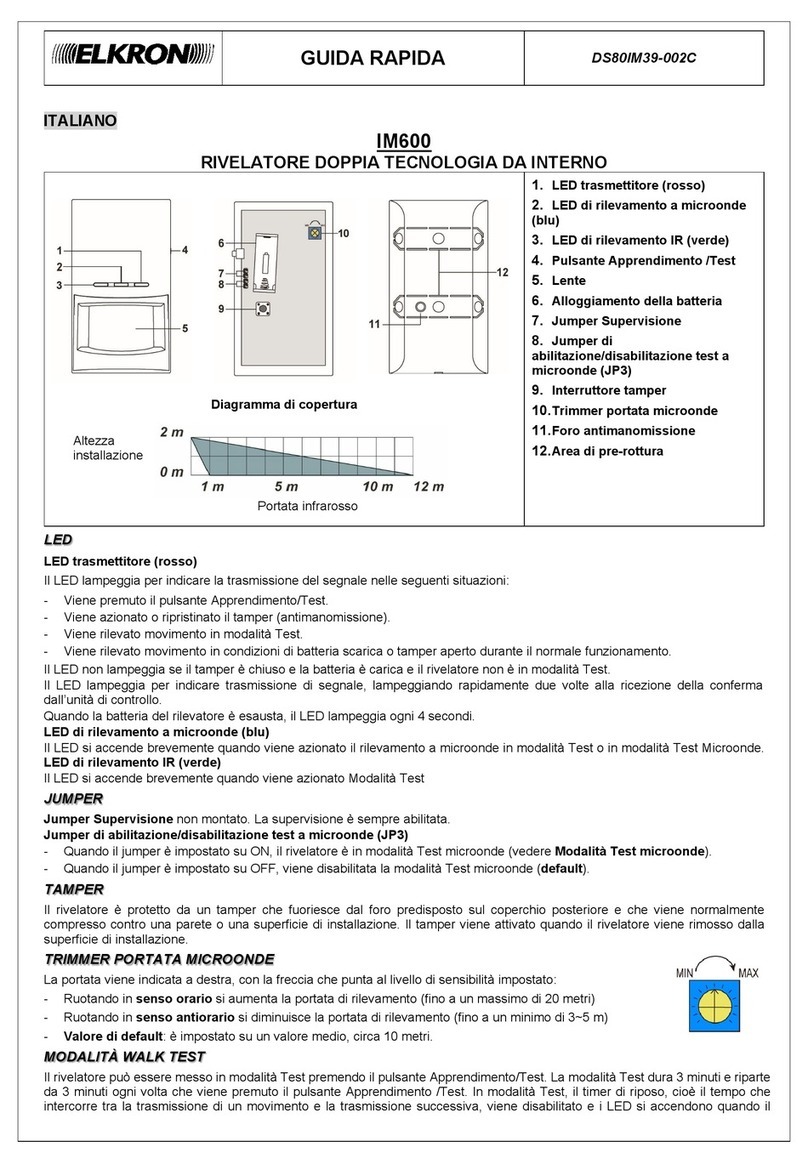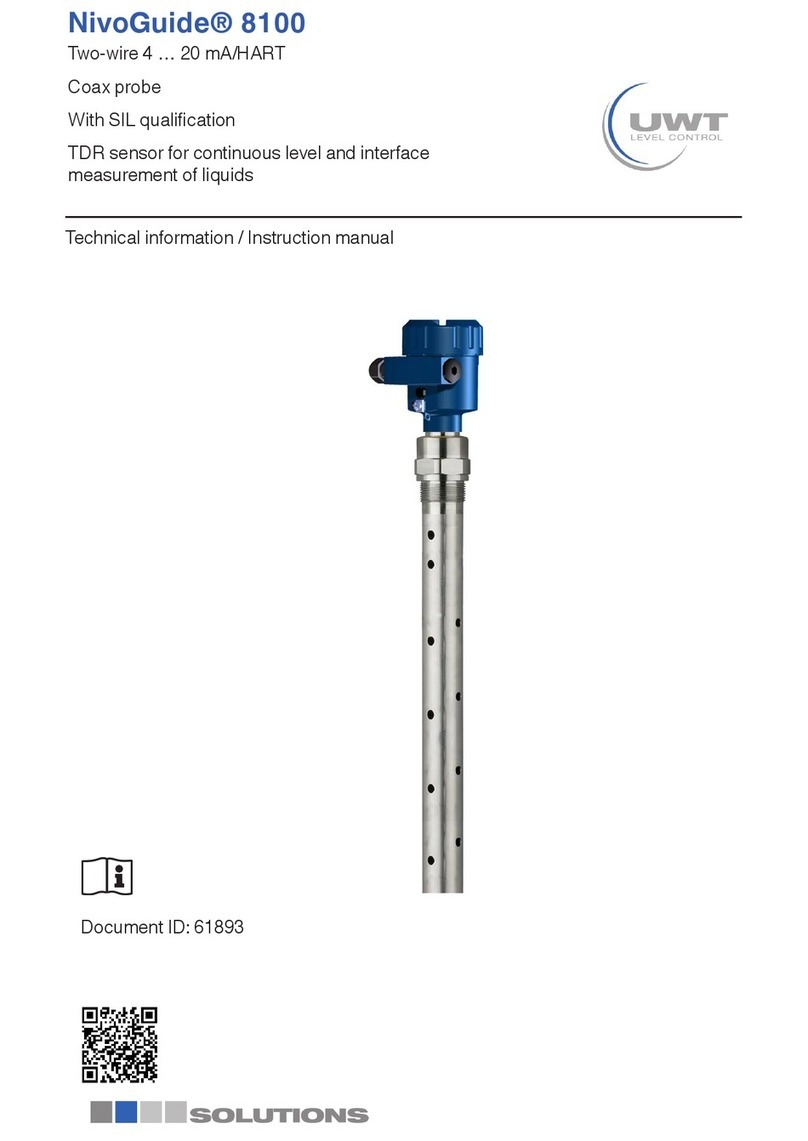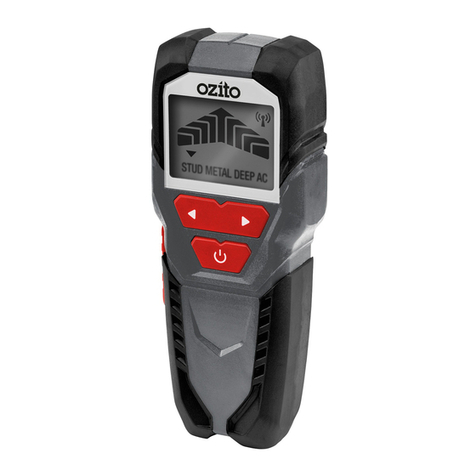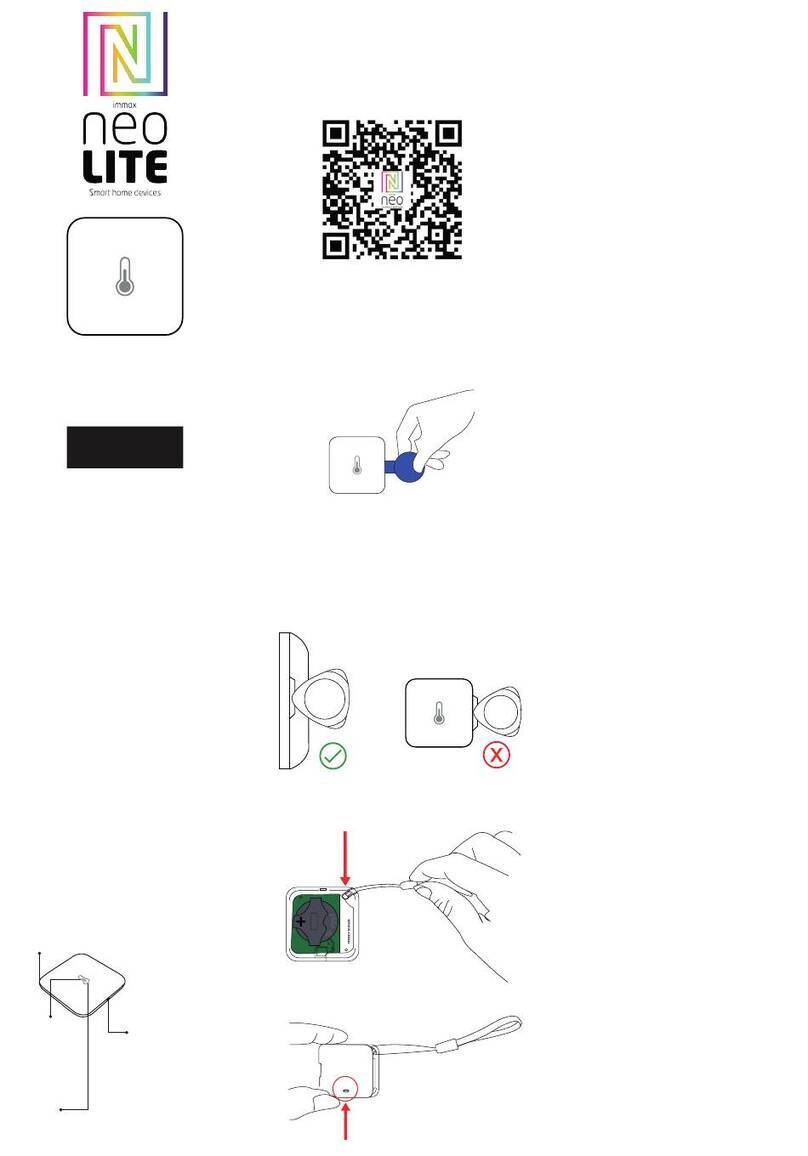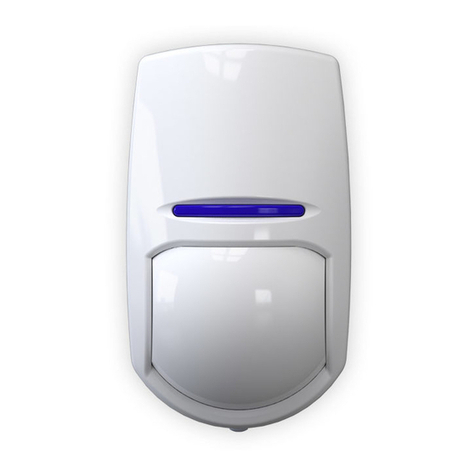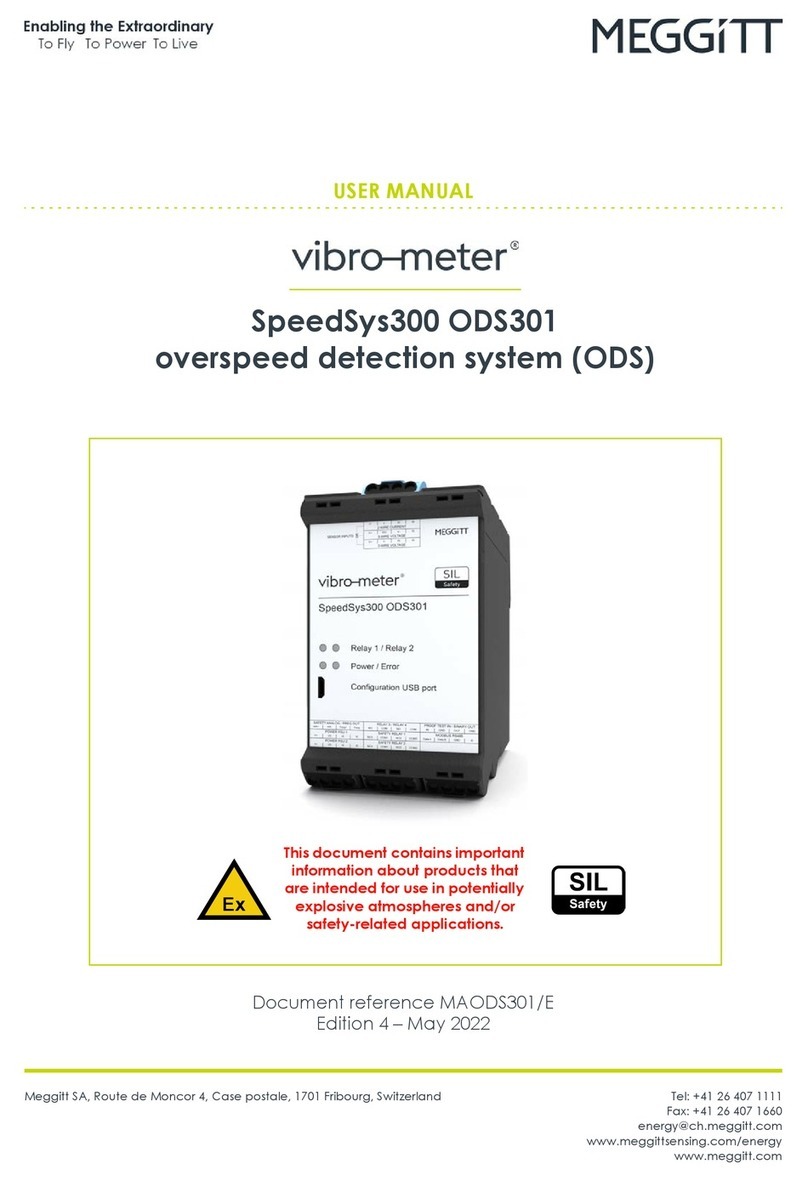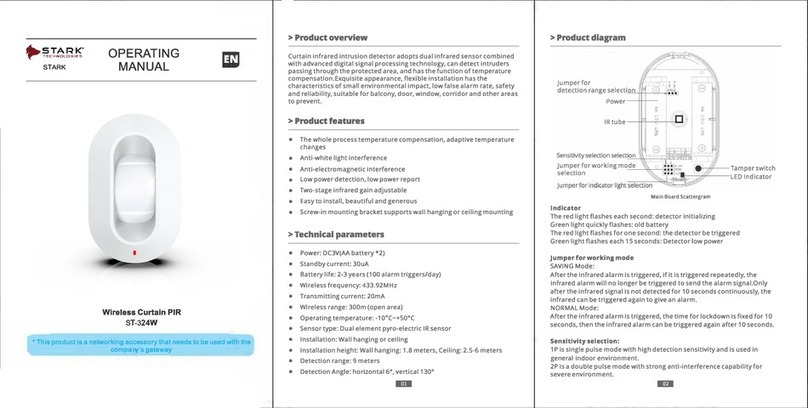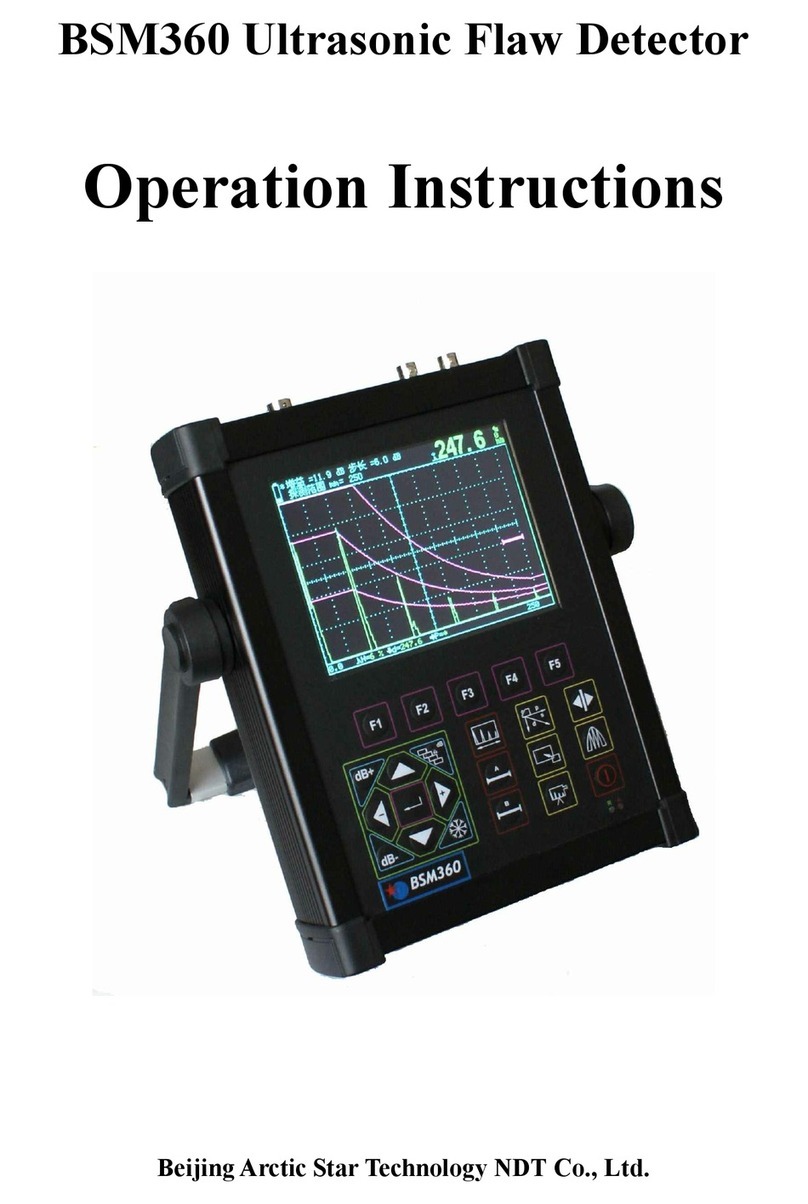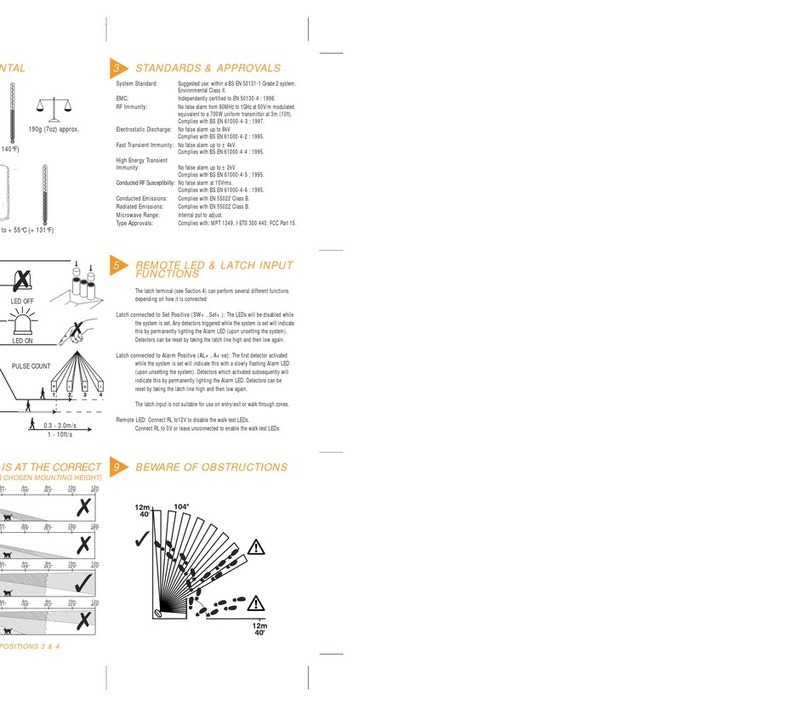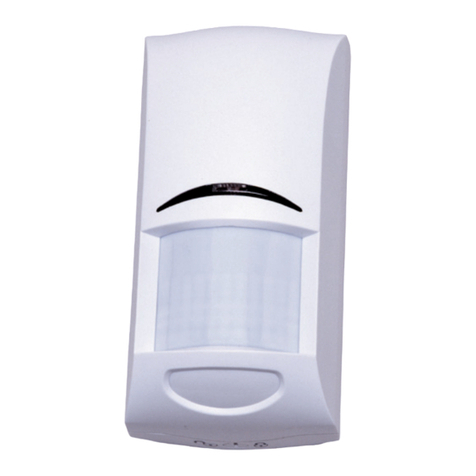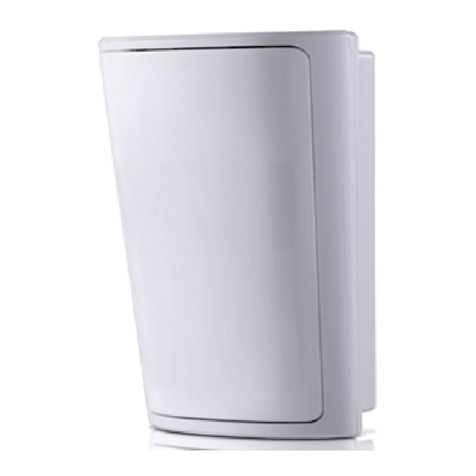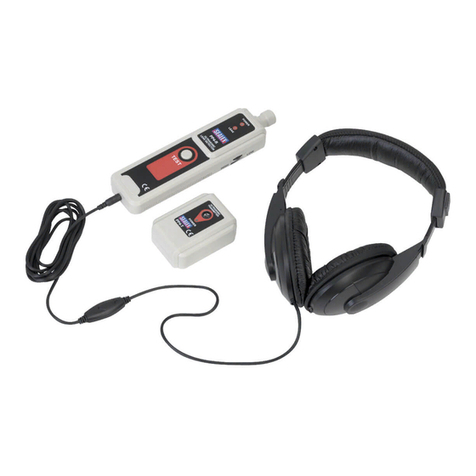
Viale Vicenza, 14
36063 Marostica VI - Italy
www.vimar.com
49401438A0 02 1907
By-alarm
01727.1
N.B.: Considerando le potenze in gioco e le interferenze presenti in campo è possibile che
anche minimi spostamenti del dispositivo possano migliorare o peggiorare sensibilmente la qua-
lità di trasmissione. E' inoltre fondamentale eseguire una periodica manutenzione dei dispositivi
per prevenire o rilevare possibili sopravvenute interferenze esterne.
REGOLE DI INSTALLAZIONE
L’installazione deve essere effettuata da personale qualificato con l’osservanza delle disposizioni
regolanti l’installazione del materiale elettrico in vigore nel paese dove i prodotti sono installati.
CONFORMITA' NORMATIVA
Direttiva RED. Norme EN 60950-1, EN 50130-4, EN 61000-6-3, EN 301 489-3, EN 300 220-2, EN 62479.
Regolamento REACh (UE) n. 1907/2006 – art.33. Il prodotto potrebbe contenere tracce di piombo.
Vimar SpA dichiara che l’apparecchiatura radio è conforme alla direttiva 2014/53/UE. Il testo com-
pleto della dichiarazione di conformità UE è disponibile nella scheda di prodotto al seguente indirizzo
Internet: www.vimar.com.
Led accesi Led giallo spento Led giallo acceso
R V
* IN: contatto esterno IN: contatto contaimpulsi
* 6 impulsi in finestra temporale 2 impulsi in finestra temporale
Durata impulso 10 ms * Durata impulso 2 ms
* Finestra temporale: 20 s Finestra temporale: 60 s
- Per salvare e tornare al menù principale premere il pulsante SELECT; per salvare ed uscire com-
pletamente dalla configurazione premere brevemente il pulsante RESET.
•Menù 4
I led verde e giallo accesi indicano che ci si trova sul Menù 4.
- Premere il pulsante SELECT per entrare in configurazione; i tre led lampeggeranno per 3 volte
a conferma delle selezione effettuata.
- Per questo menù solo una delle funzioni deve essere attiva; con il pulsante PROG scorrere le
opzioni fino a trovare la configurazione desiderata e premere il pulsante TAMPER per confer-
mare la scelta che verrà evidenziata dall'accensione del led giallo.
Led accesi
Funzioni
R V
* Canale 1: Reed a bordo + IN + Accelerometro
Canale 1: Reed a bordo + IN Canale 2: Accelerometro
Canale 1: Reead a bordo Canale 2: IN
Canale 3: Accelerometro
- Per salvare e tornare al menù principale premere il pulsante SELECT; per salvare ed uscire com-
pletamente dalla configurazione premere brevemente il pulsante RESET.
•Menù 5
I led rosso acceso indica che ci si trova sul Menù 5.
- Premere il pulsante SELECT per entrare in configurazione; i tre led lampeggeranno per 3 volte
a conferma delle selezione effettuata.
- Mediante i pulsanti TAMPER per modificare e PROG per scorrere le opzioni, impostare la
funzione desiderata come indicato nella tabella che segue:
Led accesi Led giallo spento Led giallo acceso
R V
Reed a bordo disabilitato * Reed a bordo abilitato
* Tamper disattivo Tamper attivo
Supervisione disattiva * Supervisione attiva
Intervallo supervisione 8 min * Intervallo supervisione 20 min
- Per salvare e tornare al menù principale premere il pulsante SELECT; per salvare ed uscire com-
pletamente dalla configurazione premere brevemente il pulsante RESET.
•Menù 6
I led rosso e giallo accesi indicano che ci si trova sul Menù 6.
- Premere il pulsante SELECT per entrare in configurazione; i tre led lampeggeranno per 3 volte
a conferma delle selezione effettuata.
- Per questo menù solo una delle funzioni deve essere attiva; con il pulsante PROG scorrere le
opzioni fino a trovare la configurazione desiderata e premere il pulsante TAMPER per confer-
mare la scelta che verrà evidenziata dall'accensione del led giallo.
Led accesi Funzioni
R V
* Potenza bassa
Potenza media
Potenza massima
- Per salvare e tornare al menù principale premere il pulsante SELECT; per salvare ed uscire com-
pletamente dalla configurazione premere brevemente il pulsante RESET.
INSTALLAZIONE DEL RIVELATORE
•Installare il dispositivo quanto più in alto possibile.
•Per quanto possibile, installare il dispositivo in posizione verticale (batteria verso il basso).
•Installare il dispositivo sul telaio dell'infisso e il magnete sulla parte mobile.
• Non installare il rivelatore in prossimità di oggetti metallici e dispositivi che generino frequenze radio
come ad esempio televisori, computer, router, hot spot, ecc.
La procedura di installazione è la seguente:
1. Impostare i parametri del dispositivo.
2. Acquisire il rivelatore sull'interfaccia radio 01729 (si veda il paragrafo 9.2 del manuale installatore
dell'interfaccia radio 01729).
3. Fissare il rivelatore, in modo provvisorio, nel punto di collocazione desiderato.
4. Effettuare un test di comunicazione per accertarsi della corretta comunicazione tra il rivelatore
e l'Interfaccia radio 01729. Se il test ha avuto esito positivo, verificato con l'accensione dei led
rosso e verde sul rivelatore, procedere a fissarlo in modo definitivo o, in caso contrario, riposi-
zionarlo ed eseguire un nuovo test.
By-alarm magnetic RF contact + shock sensor.
The By-alarm detector with magnetic contact is a two-way radio device with a HALL effect sensor which
is activated by an external magnet and has a special triaxial detector that can be configured as a shock
sensor or vibration sensor. The shock sensor measures the acceleration on 3 axes with 4 different pro-
grammable intensity levels; in this way the sensor generates an alarm when a single disturbance of the
stationary state that exceeds the programmed threshold is detected. The vibration sensor measures the
acceleration on 3 axes with 4 different programmable intensity levels; in this way the sensor detects the
disturbances of the stationary state for a fixed period of 10 s during which it counts the events exceeding
the alarm threshold and, when the set number is reached, triggers an alarm signal. It also has 1 input
for connecting external wired sensors. The detector needs no wired connection and is powered with a
3 V CR123 model of lithium battery.
CHARACTERISTICS
• Power supply: 3V CR123 lithium battery included
• Frequency range: 868.25 MHz
• RF transmission power: < 25 mW (14dBm)
• Receiver class: 2 duty cycle <1% class
• Average battery life: 4 years
• Low battery warning: on radio interface 01729 and in the control panel
• LED:
- yellow LED for menu navigation
- green LED for data reception
- red LED for data transmission
• Possible uses:
- on-board Hall sensor
- triaxial sensor for shock and vibration detection.
- 1 NC, NO external contact with single balancing and 3.3kΩresistance or for roller shutters or inertial
sensor
• Operating temperature: -10..+60 °C
• Dimensions: 95x29x24 mm
CONNECTIONS FOR EXTERNAL CONTACT
The specific terminal block is used to connect external devices such as, for instance, an external mag-
netic contact and a switch-alarm or inertial sensor.
IN+: input for external contact (normally closed or open or single balancing) or switch-alarm/inertial
sensor with pulse programming and time window.
IN-: negative reference.
N.B. In the case of connection with switch-alarm/inertial sensor:
- The input cannot be balanced.
- The length of the cable must be less than 1 m.
- Between one alarm and the next the contact must remain inactive for at least 10 s.
BATTERIES
The detector is powered by a 3 V CR123 lithium battery. When the battery reaches the level of 2.7 V,
the "low battery" signal is sent to the control panel; from this point on, the device remains operational for
approximately another 30 days within which you need to change the battery.
• To change the battery set the control panel to in programming mode, entering the installer code, and
then replace the flat batteries by opening the enclosures. After changing them, exit programming.
• To ensure a longer battery life, we recommend using batteries with an expiry date 5 years after the
date of replacement.
CAUTION: Danger of explosion if the battery is replaced with one of the wrong type.
DIP-SWITCH FUNCTIONS
Dip switch 1: Place to ON only when setting IN+ as a balanced input; in all other cases it must remain
on OFF.
N.B. If the Dip switch 1 is placed to ON when the balanced input function is not used, it increases the
sensor absorption and reduces the battery life.
Dip switch 2: Place to ON to disable the TAMPER with the enclosure open during the installation test.
The TAMPER signal is on when the function is programmed and when Dip switch 2 is on OFF.
OPERATION
• When first powering up and after a reset the detector starts in TEST mode. In this mode the device
detects a SHOCK or VIBRO event whenever this occurs and sends the alarm to the radio interface
01729. The detector remains in this mode for 5 minutes, after which it automatically switches to
operating mode.
• In operating mode, to preserve the battery charge, the shock and vibration sensor is disabled for 20
s after each alarm and the detection of the switch alarm or inertial sensor, connected to the IN input,
is disabled for 10 s after each alarm.
DETECTOR CONFIGURATION
Programming the device requires configuring several parameters that affect the operation of the inputs,
supervision, transmission capacity and LEDs. It is also necessary to define how the detector input is
managed, i.e. whether it should be considered as a single input or separately and can then be managed
differently from the control panel to which the radio interface 01729 is connected.




